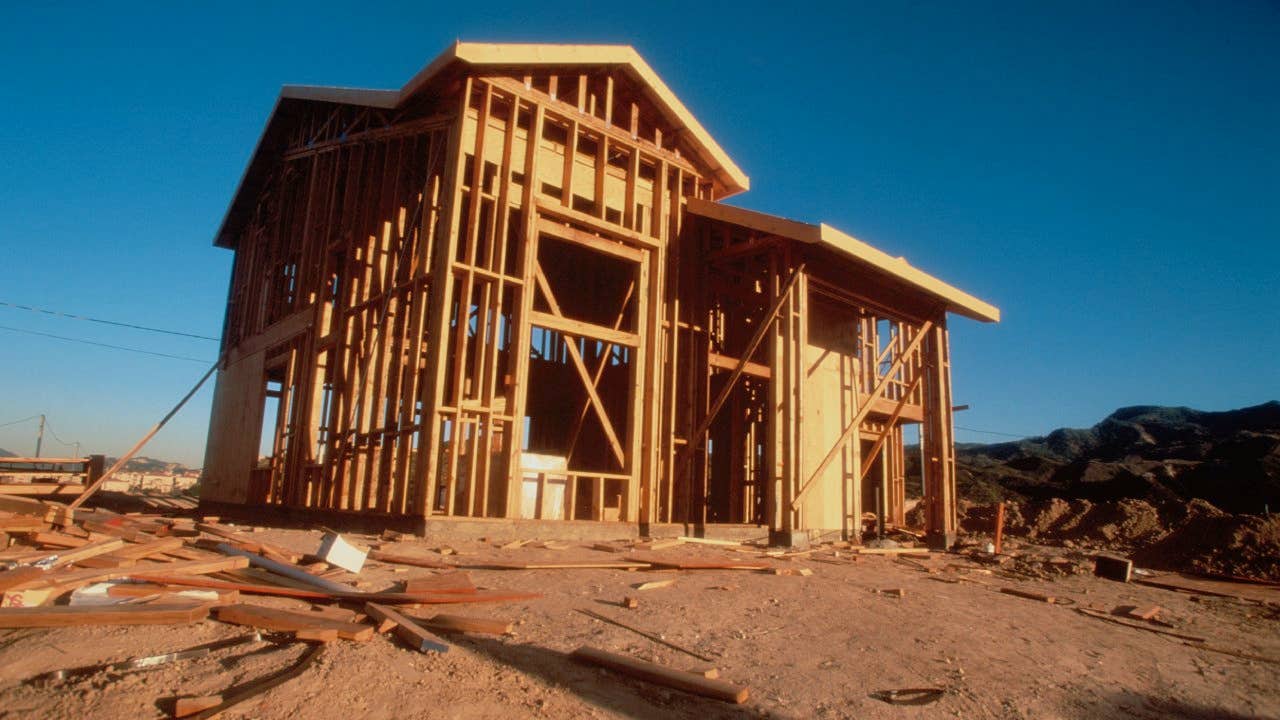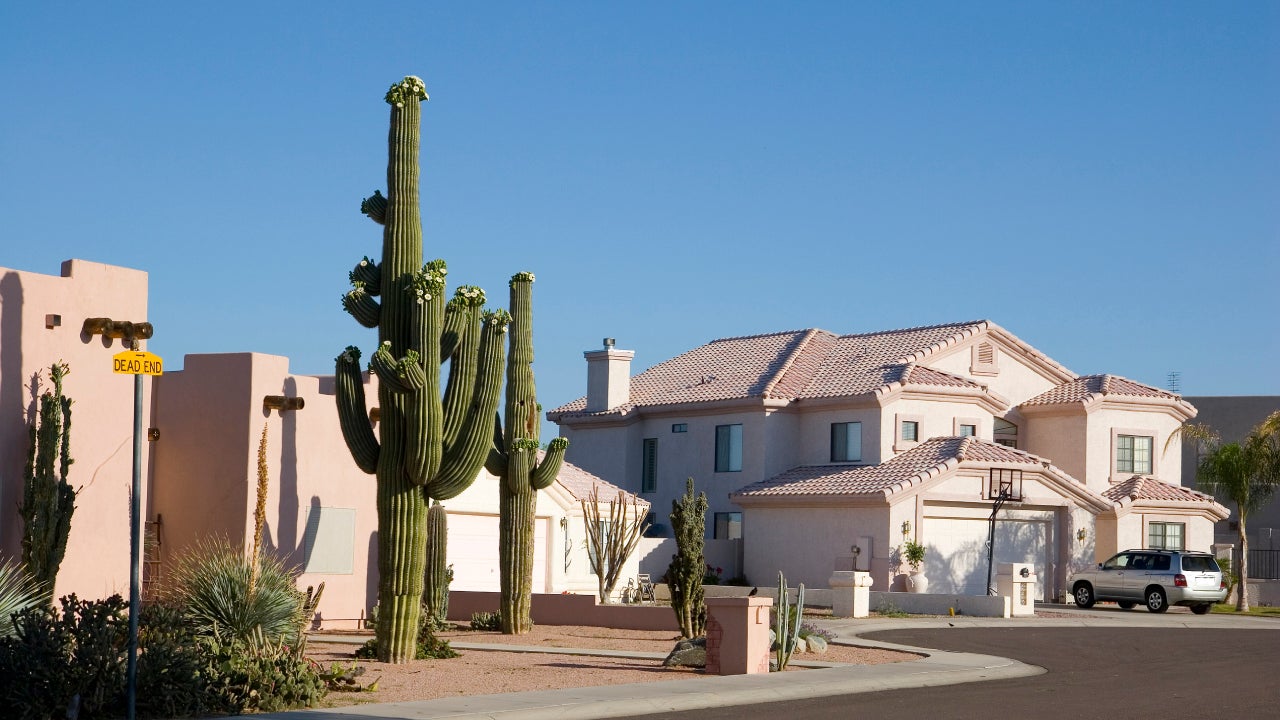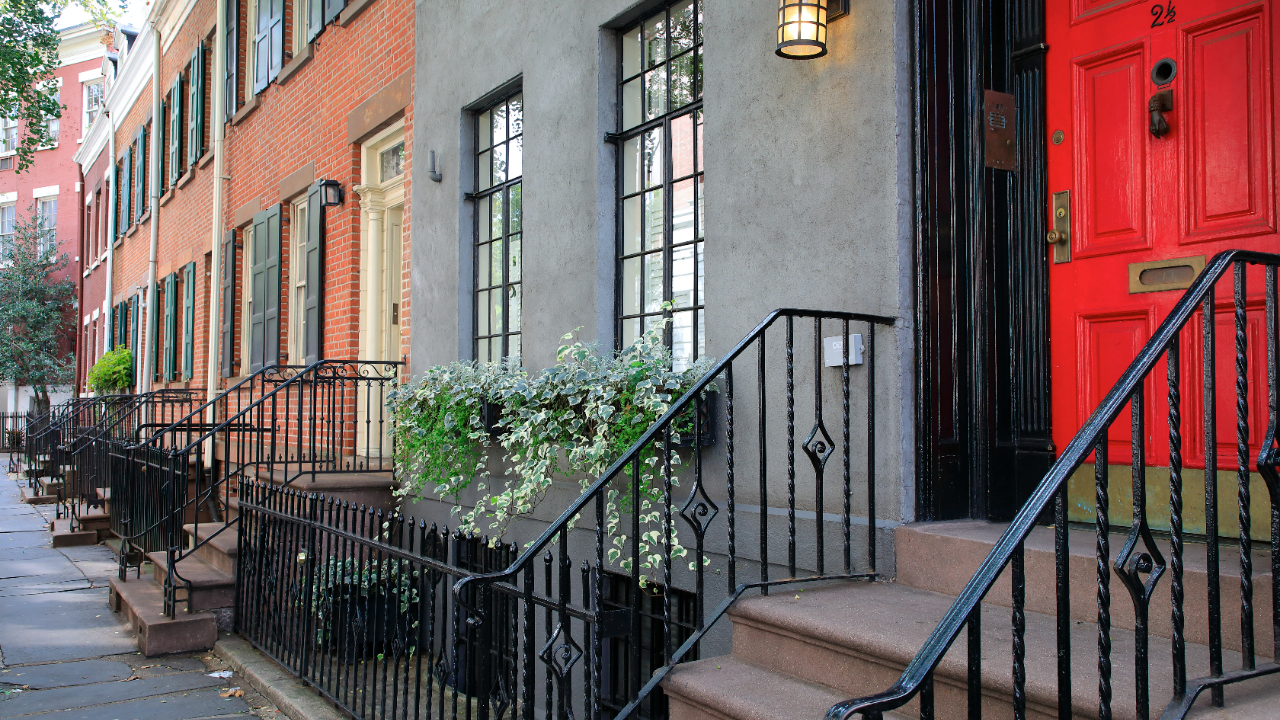What is a stick-built home?

A stick-built home is a property with a wood frame, which supports the plywood and other building materials. These homes use lumber and often have a custom design that allows the owner to personalize everything from layout to amenities (like space for a double oven).
These homes are different from prefabricated homes, which are built in a factory and assembled on site. Instead, stick-built homes are constructed from the ground up on your plot of land. While many owners prefer the convenience and price points of a pre-fab home, a stick-built home may build more equity over time and allows for unique touches.
Let’s talk about what constitutes a stick-built home, what this type of home typically costs, and when there could be disadvantages to a lumber frame.
What is a stick-built home?
A stick-built home uses wood sticks, also called dimensional lumber, to create the roof trusses and walls. While some stick-built homes may use floor plans the builder has used before, most commonly the contractor will sit down with the homeowner and create a blueprint with their input.
Stick-built homes are constructed using the traditional, built-from-scratch method. This is different from manufactured or pre-fab homes which are created on a factory line and assembled on a plot of land in cookie-cutter fashion.
How much do stick-built homes cost?
Stick-built homes are more expensive than mass-produced homes. This is because while a mass-produced house can be built quickly with few — if any — tweaks, a stick-built home takes more planning and time. It may also use more expensive materials.
According to Jennifer Spinelli, founder & CEO of Watson Buys in Denver, the average price per square foot for a custom/stick-built home is $100-$200, while the average price per square foot for a mass-produced home is $50-$100 in her area.
As far as resale values of stick-built homes are concerned, Ben Gold, founder of Recommended Home Buyers in Philadelphia, says “the prices are between $150 to $250 per square foot, depending on the style and updates needed.”
Stick-built vs. modular homes
As we’ve mentioned, a stick-built home uses a wooden frame that is assembled on site. These properties can be constructed in a wide variety of orientations, based on the homeowner’s needs. On the other hand, a modular home is constructed using pre-built modules that operate like building blocks. These homes are not as customizable as stick-built homes because there are only so many ways to assemble the modules. Both stick-built and modular homes often meet the same local building standards and can have basements.
Stick-builds vs. other homes
Stick-built homes are also more complex than manufactured homes, sometimes called mobile homes. A factory-built home made before June of 1976 is considered a mobile home, while a factory-built home made after that date is typically called a manufactured home. Unlike modular and stick-built houses, a manufactured home usually sits on concrete blocks instead of a standard foundation or a basement.
What are the advantages of stick built homes?
- Customizable. You can create the forever home of your dreams when it’s a stick-built property. These homes have no pre-existing modules so you can work with the builder to negotiate the best floor plan based on lot size and personal needs.
- Energy efficiency. Boyd Rudy, an associate broker at Dwellings Michigan, says that stick-built properties are often more energy efficient than older homes or manufactured houses. “Custom-built homes are often more energy-efficient than mass-produced homes, as they can be designed with eco-friendly features from the ground up.” This may include energy saving windows and appliances.
- Equity. Manufactured homes can be impossible to fund using a traditional home loan and owners may end up paying rent on a plot of land. Stick-built homes allow you to refinance to take advantage of decreasing interest rates, and since you own the land, you can quickly build equity in the right market conditions.
What are the disadvantages of stick-built homes?
- Disadvantages to wood. Iris Stephan of Stephan Immobilien in Stuttgart, Germany, says that solid build homes (usually made of brick) may hold up better in certain conditions than wood construction. For instance, wood frame homes tend to let in more noise and be more susceptible to both pests and water damage. A home made of brick or cement may allow you to avoid these issues.
- Limited lot availability. Many real estate brokers say that stick-built properties are usually put up in the suburbs where there is more space for custom properties and more new build permits are allowed. It can be hard to find an available lot in a more concentrated area.
- Increased costs. It is usually more expensive to build a home this way. Customizing the property and starting from scratch can include delays, unexpected material costs increases (lumber prices skyrocketed during the pandemic), and possibly higher labor costs than you bargained for.
Bottom line
Stick-built homes remain the main standard for housing in North America. They are customizable and generally the least expensive way to get a custom home. But they do take more time and labor to build than modular or prefab homes.
Why we ask for feedback Your feedback helps us improve our content and services. It takes less than a minute to complete.
Your responses are anonymous and will only be used for improving our website.
You may also like

Cost of selling a house in Arizona

What is a townhouse, and who are they best for?




